Best podcast analytics tools

Justin Jackson
Podcast stats can show you how many people listen to each episode, what apps people use (Apple Podcasts, Spotify), and what your most popular episode is. Analyzing this data can help you better understand your podcast's listeners.
The 5 best tools for getting analytics on your podcast:
Your podcast hosting platform: for an overview of listener trends use a podcast host that provides stats on downloads, listens, streams from all listening apps (Transistor.fm does this).
Apple Podcasts Connect: Apple provides additional data on folks listening to your podcast using their podcast app. You can access these by logging into Podcasts Connect.
Spotify for Podcasters: Spotify's dashboard will give you demographic information on your listeners: age, gender, plus all your streams.
Chartable: want to track your podcast's performance on all the charts? Chartable provides a breakdown of Apple, Spotify, plus global charts by country.
Note: Chartable is shutting down as of Dec. 24, 2024
Analytics on your podcast hosting platform
Most podcast hosting companies provide podcast stats for their users.
For example, on Transistor's Analytics page, you can see a variety of high-level stats:
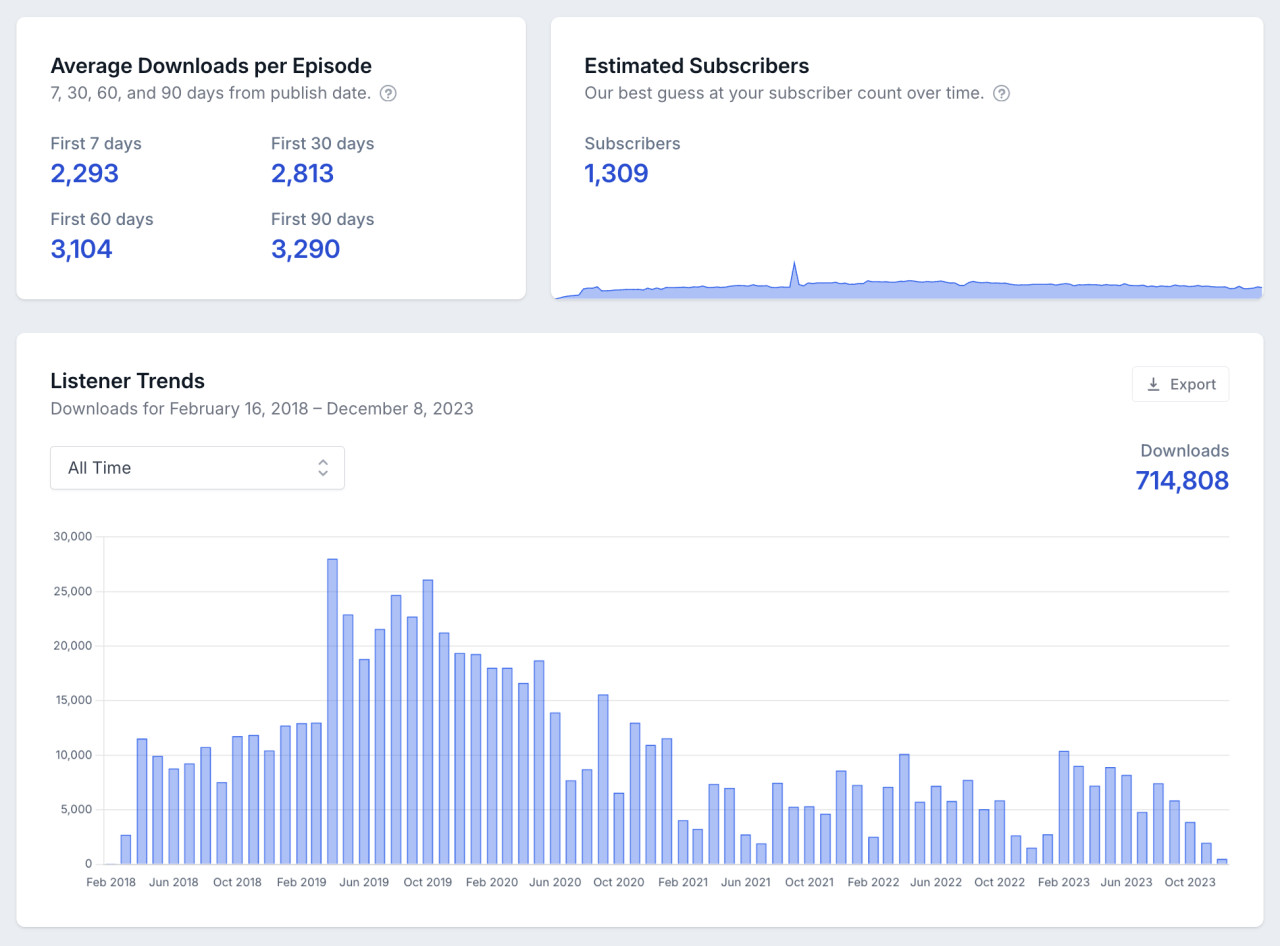
Average downloads per episode
If you're interested in how many listens a typical episode gets, Transistor will show you the average downloads for the first 7, 30, 60, or 90 days once an episode is published.
(A common question from podcast advertisers is: "How many downloads does a typical episode get in the first month?").
How many people subscribe to your podcast?
There's really no way for a podcast host to know exactly how many people are subscribed to your show. Why? There are numerous podcast players (Apple Podcasts, Spotify, Pocket Casts). Most of them don't share subscriber numbers.
However, on Transistor, we estimate the number, based on how many downloads each episode gets in the first 24 hours.
See your most popular episodes
Transistor allows you to filter your episodes by popularity.
One trend we've noticed is that a big guest can drive a lot of downloads. For example, in April 2019 we had a huge spike in listeners. That was the month we released this episode with Taylor Otwell. Taylor has a large audience, and he brought us a lot of new listeners.
In fact, if you look at this download breakdown, you can see our most popular episodes came from interviews:
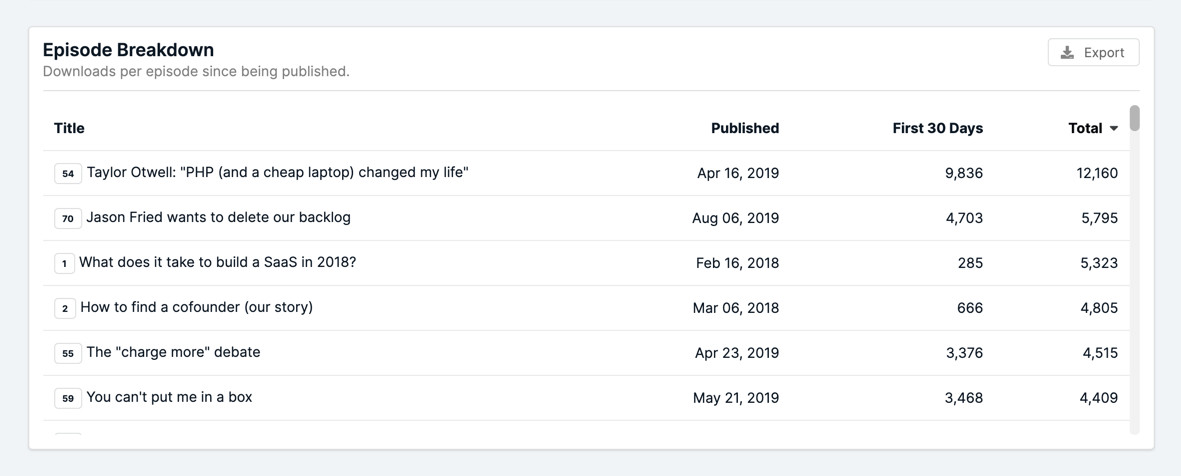
Our conversation with Jason Fried, founder of Basecamp, is our second most popular episode.
After that, our podcast's trailer has the most downloads.
Interestingly, "How to find a cofounder" is quite popular as well. My guess is folks are finding this episode when searching those keywords on Apple and Spotify.
What podcast listening apps do people use?
In this chart, you can see which podcast apps most of your listens come from; Apple Podcasts, Spotify, Overcast, etc.
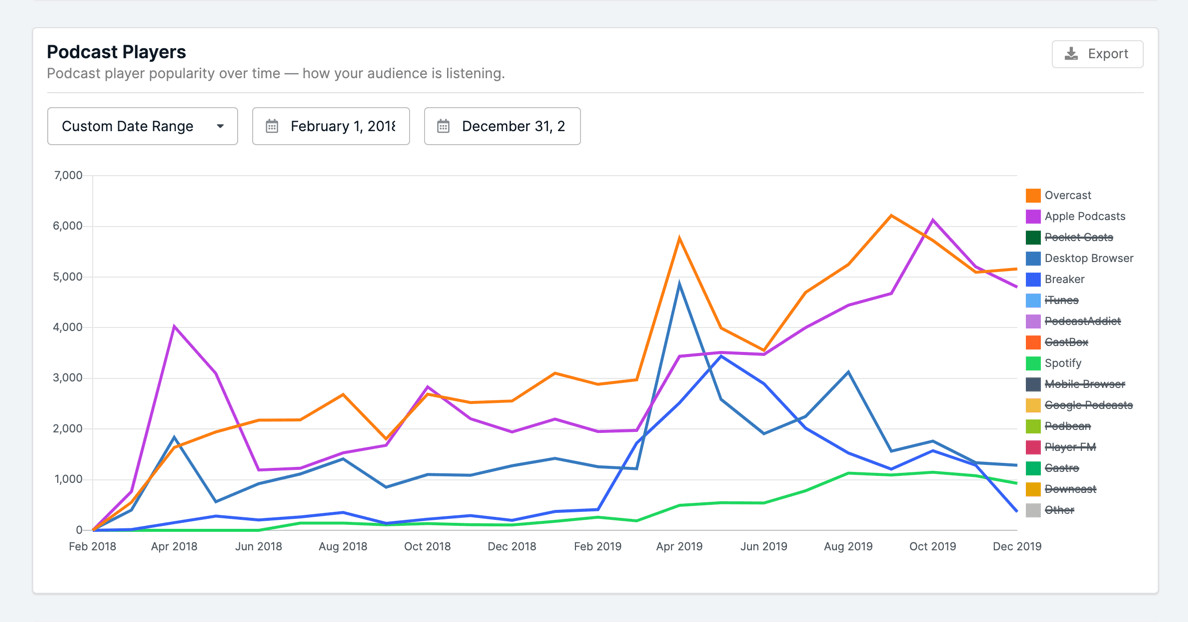
Where do our listeners live?
Transistor provides a map, so you can visualize where your listeners live.

We also show you a table view (which you can export as a CSV).

Podcast stats from Apple and Spotify
In addition to Transistor's built-in stats, you can also see analytics inside Apple Podcast Connect, Spotify's Dashboard, and more.
Apple Podcasts' analytics
In Apple's Spring 2022 release, podcast analytics got a refresh. Apple Podcast Connect now shows you how many people have clicked "follow" on your podcast inside their app:
This displays the number of followers (subscribers) your podcast has on Apple Podcasts, over time.
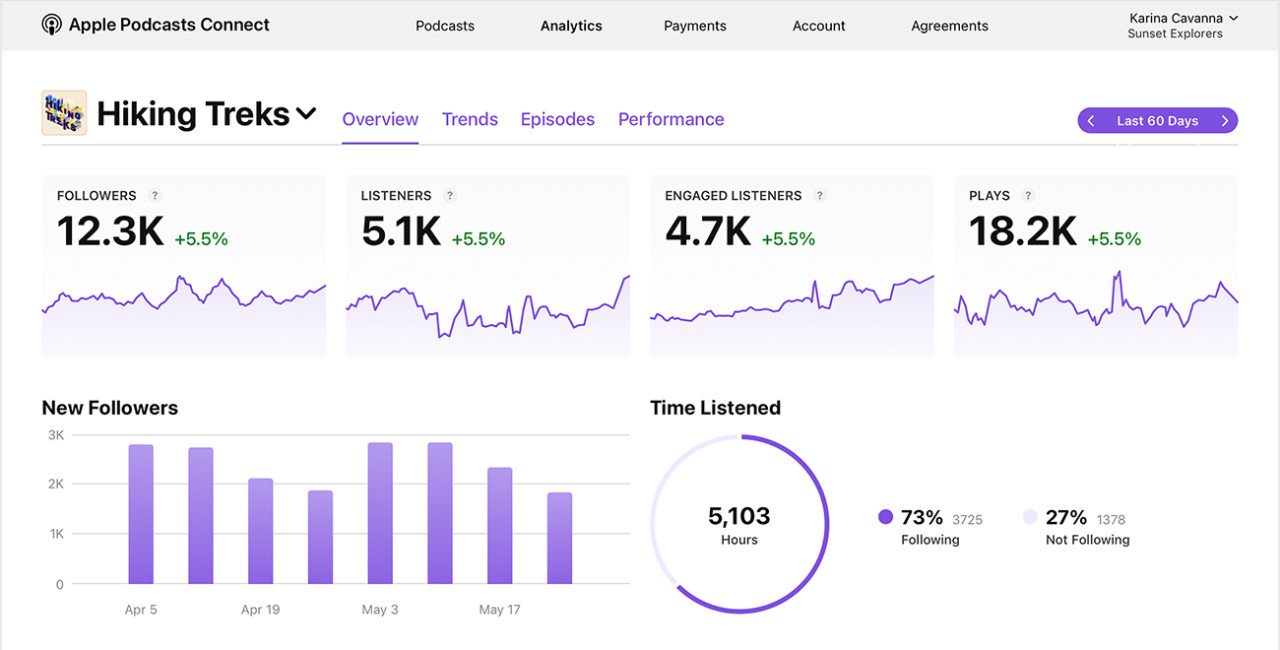
Apple will also show you what percentage of each episode are people listening to, and where they drop off.
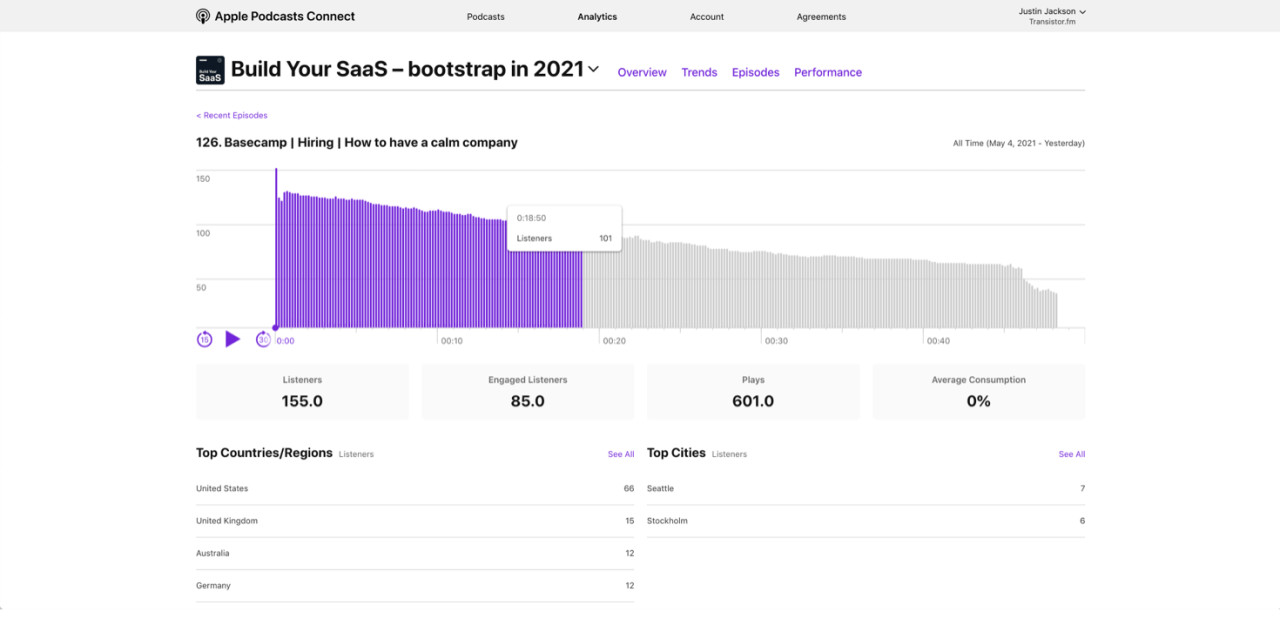
An observation: episodes that are shorter than an hour do better (30 - 45 mins seems to be the sweet spot).
Spotify's podcast analytics
Spotify has its own dashboard for podcasters as well.
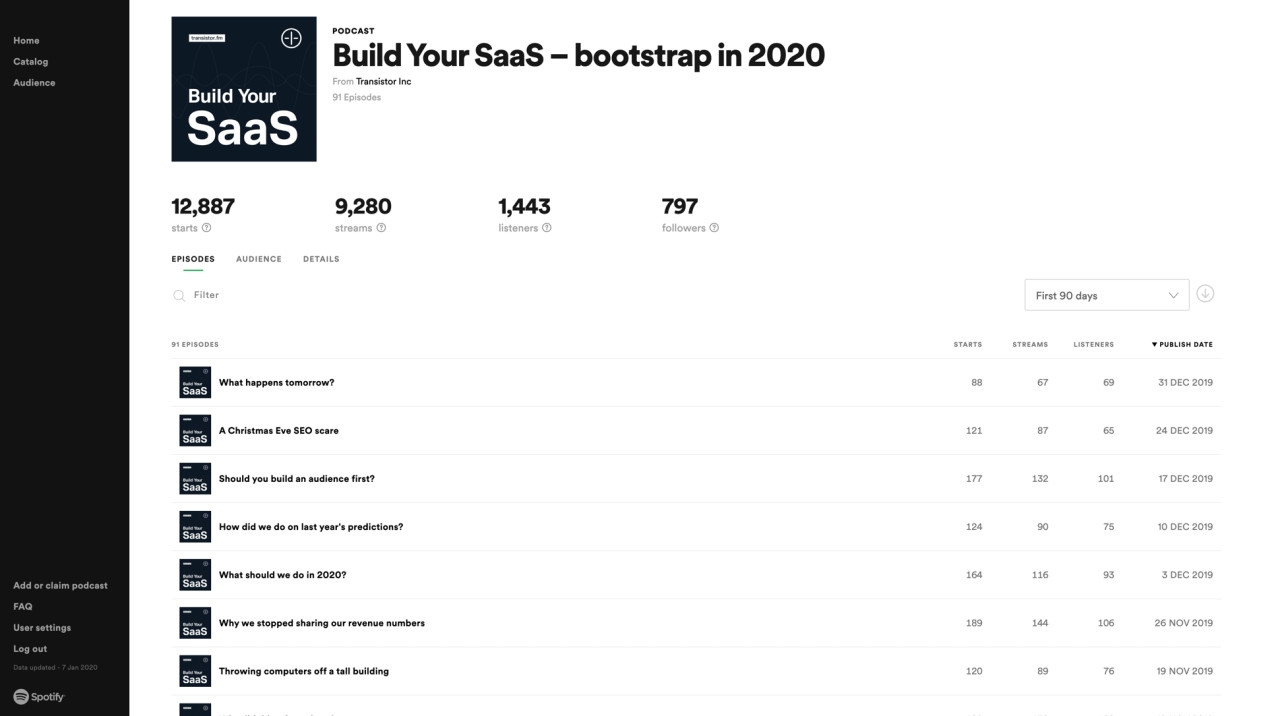
They will show you the number of streams you have on Spotify, plus a chart that tracks the number of listeners:

Spotify also tracks gender. They'll show you how many of your listeners are female, male, non-binary, or not-specified.

They'll also give you an age distribution of your listeners on Spotify.

Cohost
Cohost’s podcast analytics prefix will provide audience insights without requiring you to switch your podcast hosting provider.
They offer B2B-related stats on podcast audiences you can't get anywhere else:
Obtain a comprehensive profile of the companies tuning in, including their size, industry, location, and revenue details.
Discover which companies and industries consistently listen across episodes to gauge audience interests.
Receive an exportable list of companies that listen, which is useful for engagement and lead generation.
Chartable
You can also use third-party analytics apps, like Chartable.
They offer the ability to track your chart performance on Apple Podcasts and Spotify:
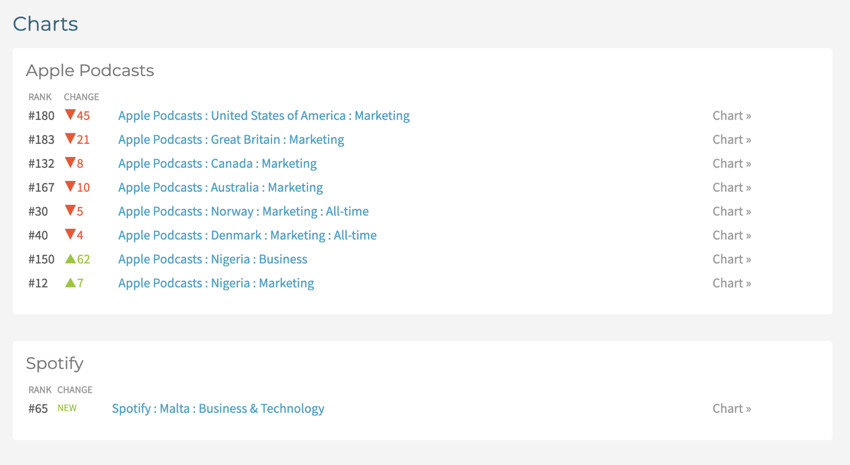
Note: Chartable is shutting down as of Dec. 24, 2024
Frequently Asked Questions
Generally, only the listening apps themselves can track whether a listener is consuming an entire episode (and where the drop offs occur). Apple Podcasts and Spotify both track listener consumption data. It's available in their respective dashboards.
Unfortunately, neither Apple nor Spotify share consumption data with podcast hosting companies.
You can see your listeners' countries, states, and cities inside of Transistor's analytics.
Currently, only Spotify tracks podcast listeners' ages and genders. You can get that information in their dashboard.